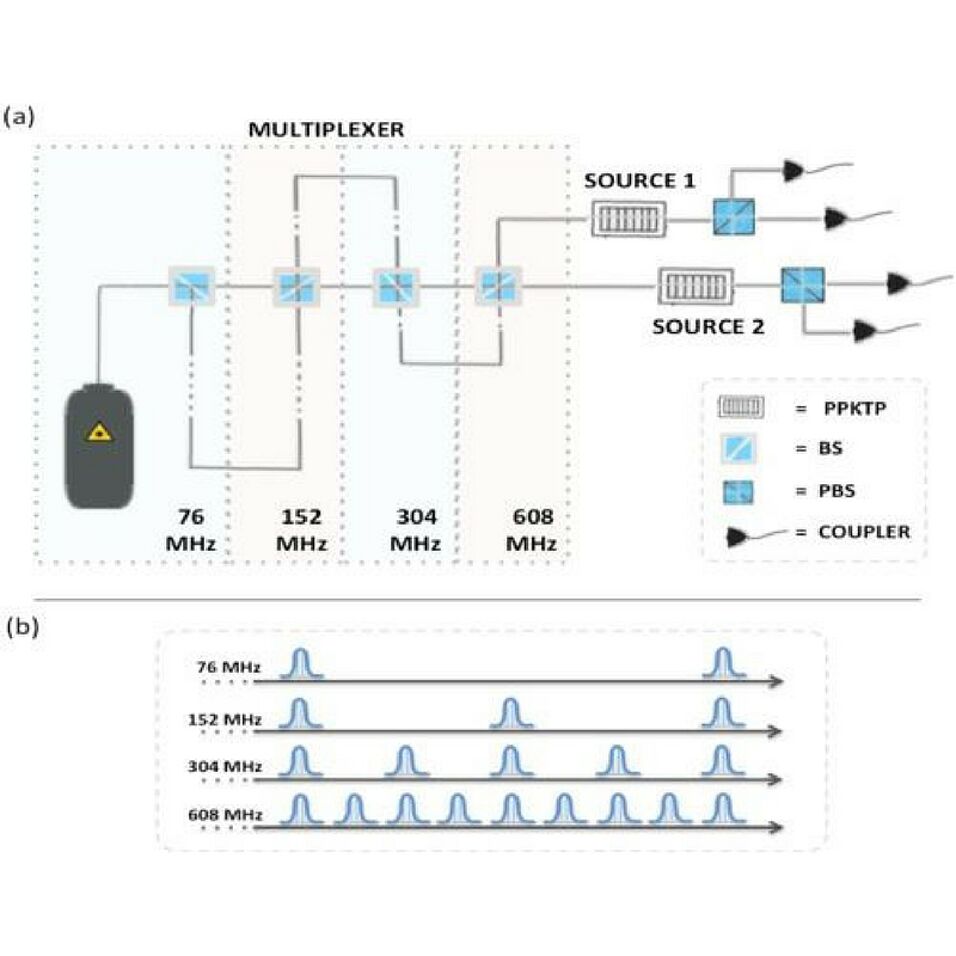Multi-photon state generation is of great interest for near-future quantum simulation and quantum computation experiments. To-date spontaneous parametric down-conversion is still the most promising process, even though two major impediments still exist: accidental photon noise (caused by the probabilistic non-linear process) and imperfect single-photon purity (arising from spectral entanglement between the photon pairs). In this work, we overcome both of these difficulties by (1) exploiting a passive temporal multiplexing scheme and (2) carefully optimizing the spectral properties of the down-converted photons using periodically-poled KTP crystals. We construct two down-conversion sources in the telecom wavelength regime, finding spectral purities of > 91%, while maintaining high four-photon count rates. We use single-photon grating spectrometers together with superconducting nanowire single-photon detectors to perform a detailed characterization of our multi-photon source. Our methods provide practical solutions to produce high-quality multi-photon states, which are in demand for many quantum photonics applications.
View full article here
Optics Express 26, 3 3286-3302 (2018).

